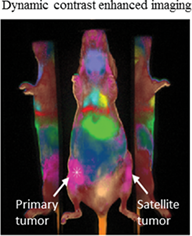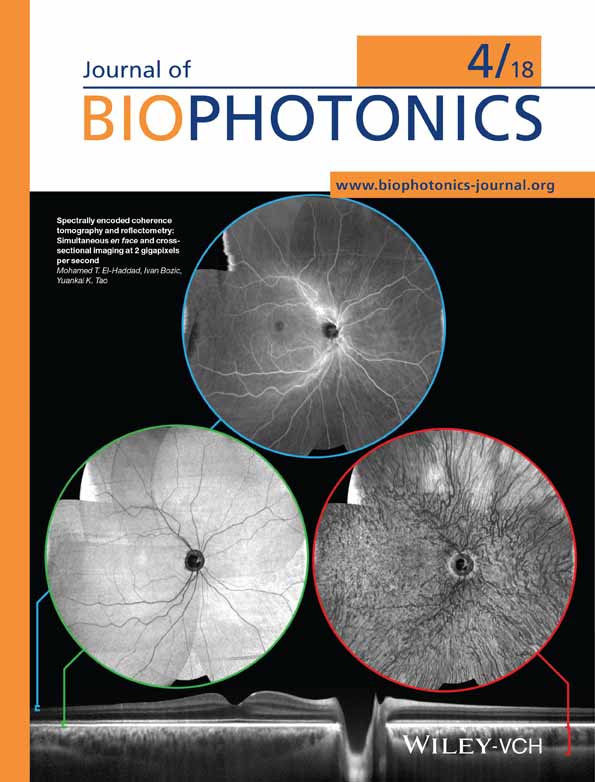Perfusion-based fluorescence imaging method delineates diverse organs and identifies multifocal tumors using generic near-infrared molecular probes
Abstract
Rapid detection of multifocal cancer without the use of complex imaging schemes will improve treatment outcomes. In this study, dynamic fluorescence imaging was used to harness differences in the perfusion kinetics of near-infrared (NIR) fluorescent dyes to visualize structural characteristics of different tissues. Using the hydrophobic nontumor-selective NIR dye cypate, and the hydrophilic dye LS288, a high tumor-to-background contrast was achieved, allowing the delineation of diverse tissue types while maintaining short imaging times. By clustering tissue types with similar perfusion properties, the dynamic fluorescence imaging method identified secondary tumor locations when only the primary tumor position was known, with a respective sensitivity and specificity of 0.97 and 0.75 for cypate, and 0.85 and 0.81 for LS288. Histological analysis suggests that the vasculature in the connective tissue that directly surrounds the tumor was a major factor for tumor identification through perfusion imaging. Although the hydrophobic dye showed higher specificity than the hydrophilic probe, use of other dyes with different physical and biological properties could further improve the accuracy of the dynamic imaging platform to identify multifocal tumors for potential use in real-time intraoperative procedures.





